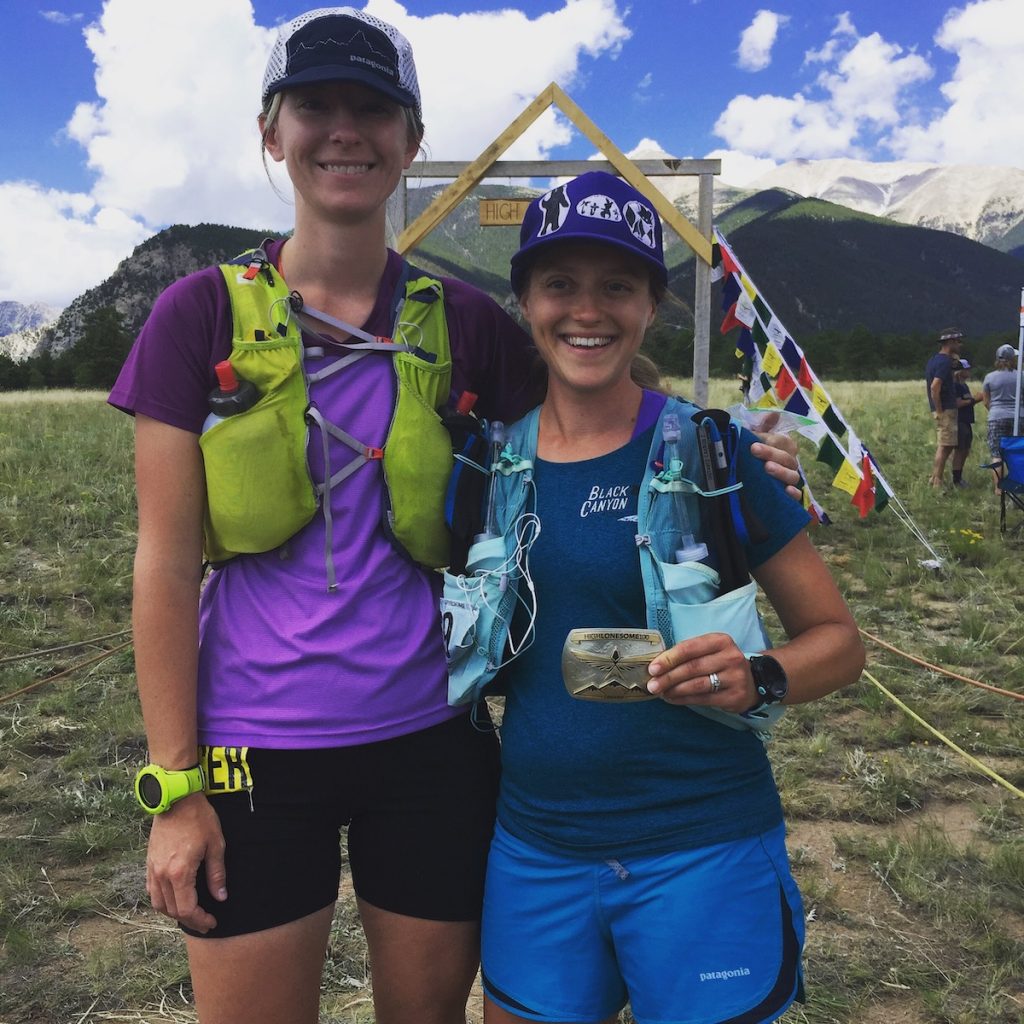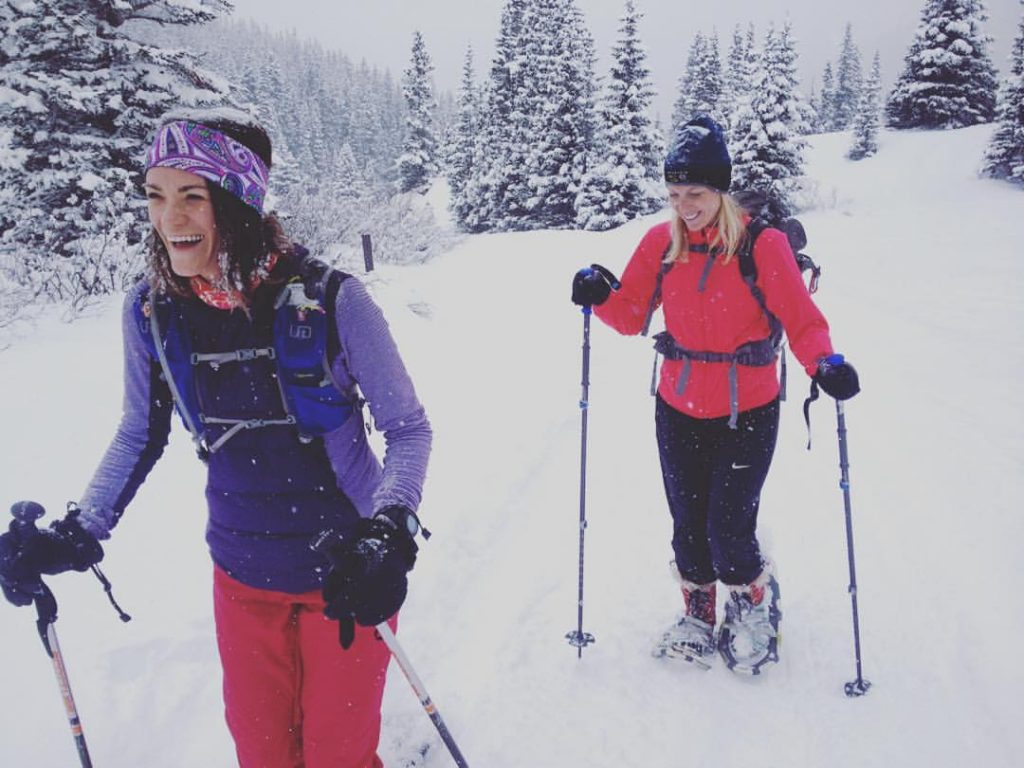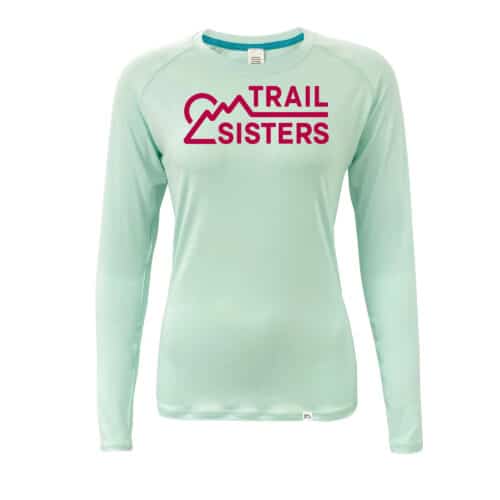Main Menu
Imposter Syndrome Keeps Women from Dreaming Big at Ultras

Allisa is a Colorado ultrarunner who lives for long days in the mountains. Sometimes racing gets in the way of adventuring so you are more likely to find her on top of a peak than at a starting line. She has two Australian Cattle Dogs that chase her through the mountains and a husband who is usually a step ahead of her, encouraging her to pursue bigger and bolder things. When she’s not running you can find her in her garden with her 10 chickens.
Share This Article!


By: Allisa Linfield
I’ve seen the question asked many times throughout the past few years. Why are there less women competing at races over the 50k distance? The answer is complex and multifaceted, but to really find the answer we need to understand the psychological experience that women have when they participate in a sport where they are under-represented. For many female endurance athletes, part of this experience can be labeled as Imposter Syndrome.
Imposter Syndrome is when an individual doubts their abilities and fears being exposed as a fraud despite objective evidence showing that they are competent, qualified, and experienced. Measurements of performance are surrounded by intense anxiety and even depression, sometimes causing the individual to withdraw their participation. When the individual experiences success or positive feedback, they often discredit it saying that they were either lucky or that they only succeeded due to being over-prepared. These sentiments reflect a mindset that ability is a fixed quantity – either you have it or you don’t.
Initial clinical research focused on individuals in an academic setting hypothesized that women were more likely to experience Imposter Syndrome than men. Subsequent studies found that occurrence rates were equal in that setting and that 70% of people were likely to experience Imposter Syndrome at least once in their lives. I bring this up because if you are a man reading this article and you are tempted to disregard the ideas discussed here because you have experienced Imposter Syndrome and it hasn’t stopped you from competing in ultras, then I encourage you to use your experience as a platform for empathy instead of taking a defensive stance.
Interestingly men and women deal with Imposter Syndrome differently. Imposter feelings in men were correlated with impulsivity, a need for change, and a low need for order, whereas these correlations were not found among women experiencing imposter feelings. This means that women are more likely to respond to imposter feelings by withdrawing while men are more likely to respond by trying to prove themselves. And now we return to the question at hand, why are so few women participating in difficult and longer races?
A woman experiencing Imposter Syndrome may find success in 50k races and is more likely to participate in events where success is probable. Success can mean many things and, for many, completion is a success in itself. Imposter Syndrome occurs when an individual does not internalize their successes. External voices inform internal narratives and women are more likely to play it safe due to these voices. Men are more likely to have a voice telling them that to really prove their competence they need to push it and try something even harder. Neither of these responses are ideal. However, if the goal is to see women’s participation in difficult races increase, we must do what we can to mitigate their responses to imposter feelings.

For an individual to counteract the effects of Imposter Syndrome in their life, they need to first understand the coping mechanisms they use that maintain the imposter position. Researchers, Clance and Imes, identified 4 behaviors that people use to cope, and while there are certainly more, I think you may see yourself in these behaviors.
Behavior 1: Over-preparation
While training is certainly required to achieve success in any race, many women take this to the extreme. Amanda Simpson, a mountain runner with a completion of the inaugural and challenging Ute 100, has observed that, “There are quite a few training plans authored by famous female athletes, or written by women-led groups that require insane amounts of weekly mileage, combined with intense workouts. The language around these plans universally states they are the ‘minimum required to finish your first race,’ with even more intense plans if you actually want to win. They often suggest removing taper and recovery time before and after races that aren’t your target race.”
Behavior 2: Telling people what they want to hear instead of asserting your views
Recently the High Lonesome 100 publicly announced their decision to reserve 50% of their 2020 lottery spots for women. This has sparked a lot of conversation among men who do not like that they may have a harder time making it into the lottery. Co-Owner and Aid Station Director, Kelsey Banaszynski, took the lead in facilitating these conversations on social media. I thought that other women would join in the conversation and when I spoke to women afterward they said that they were afraid to voice their opinions because of the way the men were responding. Kelsey reflects on the situation saying, “I wasn’t surprised to see so few women jumping in on these conversations because let’s be real, most of the comments were thinly-veiled sexism. Starting a sentence with ‘I like women more than men, but…’ and then proceeding to dis our 50/50 policy and become argumentative when we try to engage isn’t supporting women. It’s sexist.” She continues, “We made these policy changes because we want to close the gender gap in ultras and to be an ally means to stand behind your decisions and do your best to educate and bring people with you rather than to ignore or shut them down.”

Behavior 3: Aligning yourself with a respected member of the community for their stamp of approval
While many people select their coach based on how they feel the coach’s strategy will help them, there are many ultra-running coaches who collect athletes with nothing more than a successful personal image. Positive benefits can come from the resulting relationships. However, the individual, whether athlete or coach, coming to the partnership looking to fulfill these needs will find that their imposter feelings remain.
Behavior 4: Avoiding success to prevent societal rejection
We can all think of someone who self-sabotages before a race. Maybe they get drunk, don’t take care of themselves, don’t taper, eat some spicy tacos, or don’t plan well. Afterwards they can blame their race outcome on something that doesn’t reflect on their perceived “ability.”
Ok so, now that we understand what Imposter Syndrome is and the unhealthy ways we cope with it, what can we do about it? There are two levels at which we need to “treat” imposter syndrome – the individual level and the organizational/societal level. Remember that the first female road marathoners participated as literal imposters. I’m talking about Bobbi Gibb and Kathy Switzer who had to pretend to be men in order to participate. Undoing hundreds of years of patriarchal structures, influences, and voices seems more daunting than running the Triple Crown of 200s. HOWEVER, it is impossible for women to quiet their internal voice telling them that they are part of the weaker sex until we quiet the big booming external voices telling them that they are incapable.
Race organizations can do a lot to encourage more female participation, starting with designing with the mid-pack woman in mind instead of the first-place man. I’m not talking about token pregnancy deferrals and tampons at aid stations, while those things are certainly helpful. There are a lot of ways that a race organization can tell a woman, “You don’t belong here,” that they may not even be aware of.
Cutoff Times
Women need cutoff times that are attainable. For many mountainous 100 mile races you need to be a 75% woman on Ultrasignup to be “allowed” to finish. The cutoffs were likely chosen by a male race director who figured that the time seemed “generous” to them. What this communicates to a mid-pack female runner is that you can’t be anything but your best on race day because if you slow down you are a burden. Getting cutoff at a race after investing so much time, money, and effort is also heartbreaking. For first-year or newer races, setting cutoffs can be difficult. High Lonesome 100 just wrapped up its third year and Race Director, Caleb Efta, comments, “We’re diligent about watching our race statistics. Every year we take a step back and look at who is getting cut off, not only by gender, but also age.”
Aid Stations
There is nothing more soul crushing than getting to an aid station where they are packing up, out of supplies, or are grumpy to be there. A woman is more likely to arrive to a scene like this and DNF than a man, not because she feels unable to continue, but because we have been raised to believe that being an inconvenience is the greatest crime women can commit. It can be difficult for a race to find volunteers to cover an aid station for an extended time. However, if races prioritized and incentivized the volunteer experience so that volunteers were happy and prepared for their jobs then runners, women in particular, would benefit as well. Furthermore, recruit women to captain aid stations or to be part of your race organization. Make your female volunteers as visible and vocal as possible.
Registration
If you are a race that sells out quickly or has a lottery, consider allocating a certain number of spots for women. This may require you to turn away a greater proportion of qualified male applicants. Allocating spots for women is a way to tell women that you want them there. Women will go where they are wanted. Many women consider themselves to be filler runners, as Amanda Simpson comments about Run Rabbit Run, “Yes, we do get an incredible race experience on what I consider a well-marked course, with excellent aid stations. But the perception is the bulk of the race is generating revenue to award and attract the best runners – the rest of us are there to fill up the purse.” While men and women may both feel like “filler runners” men are more likely to respond to that feeling by pushing hard to prove themselves while women just won’t show up.
Language and Images in Marketing
Women are good at reading between the lines. If the language on your website and in your other marketing materials says something like, “This is a graduate level race,” or, “For the experienced runner only…” these phrases are subjective and women are more likely to deem themselves unqualified. Instead try to remain objective when stating the qualifications required and suggested for participation. While women may not be going through your website counting the number of photos featuring women compared to the number of photos with men, they will notice that they don’t see many people like them participating in the race and are more likely to conclude that they don’t belong there.

Finish Line and Award Experience
Many races have their awards ceremony before the top female athletes finish the race. This does a disservice to ALL of the women present at the race. If you have your awards ceremony shortly after the podium women finish, then all of the women still on the course, both participating and crewing, do not get the opportunity to see the women who inspire and encourage them get recognized for their performance. You cannot discount the power of witnessing a person in authority award something to someone that you identify with or aspire to be. Additionally, rushing to have an awards ceremony for the convenience of the men communicates that female participation in the sport is inconvenient.
While we wait for the gatekeepers of our sport to start making changes, what can women do as individuals to free themselves from experiencing Imposter Syndrome?
Group Therapy
Clinical studies have found that group therapy can help. How does this translate to female ultrarunners? It means running with other women. The reason why group therapy helps is because women are able to see the effects of Imposter Syndrome in their peers and then recognize how they, too, disregard reality and choose a narrative that they are just a fraud. Run with other women and talk about this issue. You will find that even the most experienced, fast, or fit women experience the same feelings that you have. Together, step into the freedom of knowing that you are strong, qualified, fast, tough, and capable. Make a practice of saying it out loud to each other and to yourself.

Reframing
Make a commitment to yourself to not think thoughts like, “I might DNF.” Plan for success and reframe your thoughts to, “I’m going to finish this race.” Give your crew the tools they need to plan and communicate in case something comes up on race day but you don’t need to actively plan for your failure. Dismissing your hard work, fitness, and experience by saying things like, “I probably can’t finish anyway,” is degrading to yourself and to the people who believe in you and are there to help you. Courtney Schwartz, a trail runner residing in Idaho who competes in everything from 50k to 100 mile races, recognizes the power of positive self-talk saying, “When I start to feel what I call ‘anxious horse brain’ during or before a race, I have gotten better at zooming out and focusing on things my coach tells me all the time and that I now believe myself… ‘I am SO proud of you today for being here. No matter what happens today!! PROUD OF YOU ALWAYS NO MATTER WHAT!!’ Sometimes I even say it out loud!”
Be Authentic
Even if you don’t have a social media account, you still have a community where you share your story. If you are having a great day and you want to share a picture of you looking like a beast on top of a mountain, that is great. If you are willing, also share your low points with people who would benefit from hearing what you’ve learned. This accomplishes two things. Some forms of therapy for women experiencing Imposter Syndrome include them showing their true selves and then observing the response of the people around them. They usually find that the catastrophe that they thought would happen does not occur and that their fear is misplaced. The second benefit is that the women in your community may be encouraged by your authenticity more than you know. When they are going through a low point they can remind themselves that you went through something similar and made it through the other side.
Mindset
Research done by Carol Dweck shows that people tend to have two mindsets about their ability. One side tends to believe that ability is fixed. People on this side feel that poor performance shows that they don’t have what it takes and that they never will. On the other side, people have a “growth” mindset surrounding ability. They think that ability can be shaped throughout your life and that a poor performance can show you what you need to work on or change in the future in order to accomplish your goals. Female ultrarunners can work on adopting a growth mindset where every race is just a learning experience regardless of the outcome. Alyson Kirk, a peak-bagger and 100-mile specialist living in Colorado, recounts her experience at the 2018 Never Summer 100k after winning the first three years of the race, “I didn’t feel like I was anywhere close to some of the elite women who were going to toe the line. I ended up going out harder than I should have and dropped out around mile 30 when I knew I wasn’t going to win. The fourth time at Never Summer taught me so many valuable lessons that have changed my mind set and have helped me grow into a less-comparative and well-minded ultra runner.” She has gone on to win the last seven 100 mile races she competed in.
Bringing about change may feel daunting. I encourage you to examine yourself and to not let imposter feelings have power over you. If you are in a position to make changes on a societal level, do what you can. Start with the little things and don’t make up excuses to let things continue to be the way they are.
For more information on the research cited in this article check out:
https://mpowir.org/wp-content/uploads/2010/02/Download-IP-in-High-Achieving-Women.pdf
https://paulineroseclance.com/pdf/-Langford.pdf
https://www.tci-thaijo.org/index.php/IJBS/article/view/521/pdf
About the Author

Allisa is a Colorado ultrarunner who lives for long days in the mountains. Sometimes racing gets in the way of adventuring so you are more likely to find her on top of a peak than at a starting line. She has two Australian Cattle Dogs that chase her through the mountains and a husband who is usually a step ahead of her, encouraging her to pursue bigger and bolder things. When she’s not running you can find her in her garden with her 10 chickens.
Share This Article!












One Response
Thanks for the great article! I ran a race in June where the last aid station had been packed up when I arrived- and I wasn’t even the last person out on course! I emailed the RD and (politely but firmly) expressed my disappointment in the situation. They were grateful for the information and promised that they would be more clear about the expectations of the volunteers in future years. We need to raise our voices to make changes and this experience built my confidence to do it again.